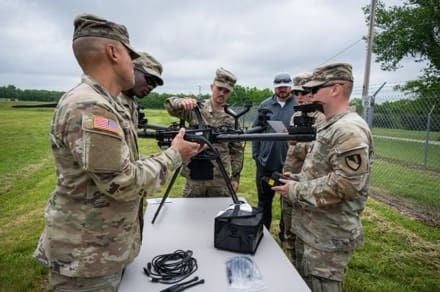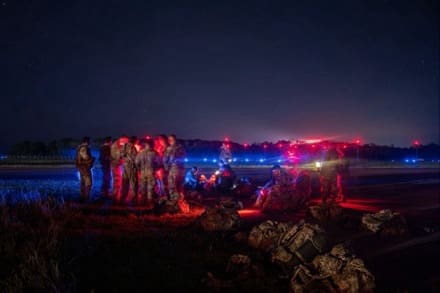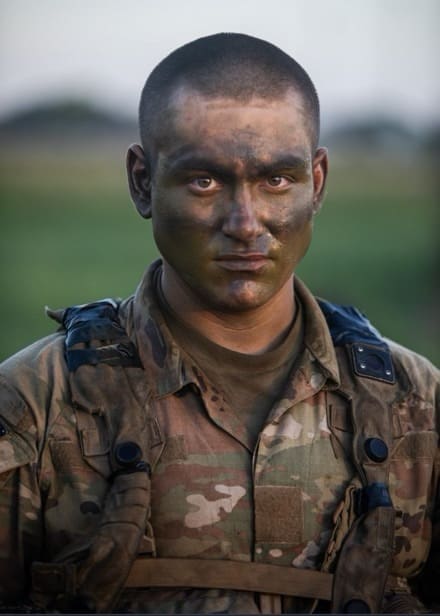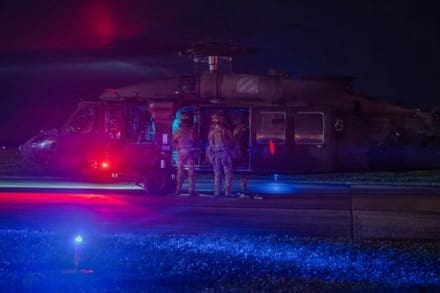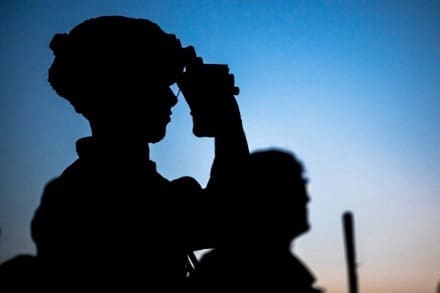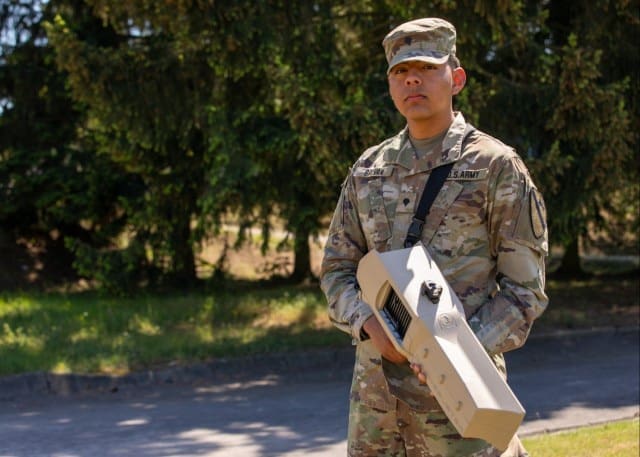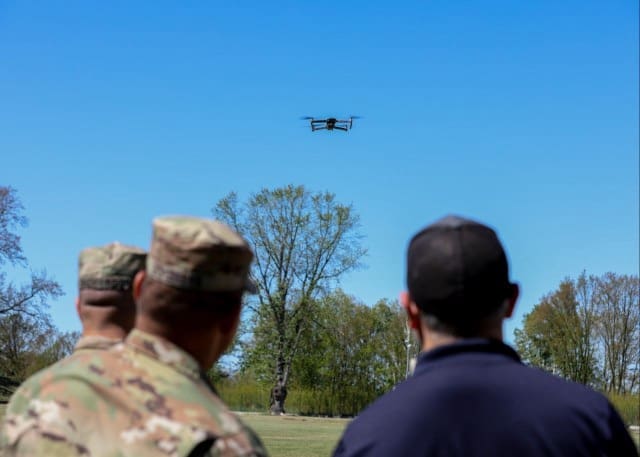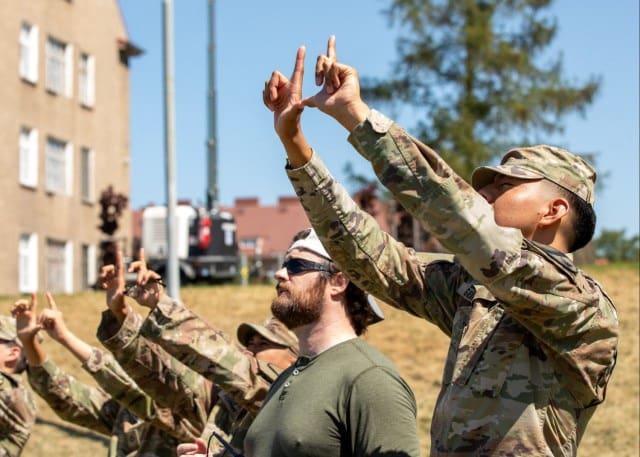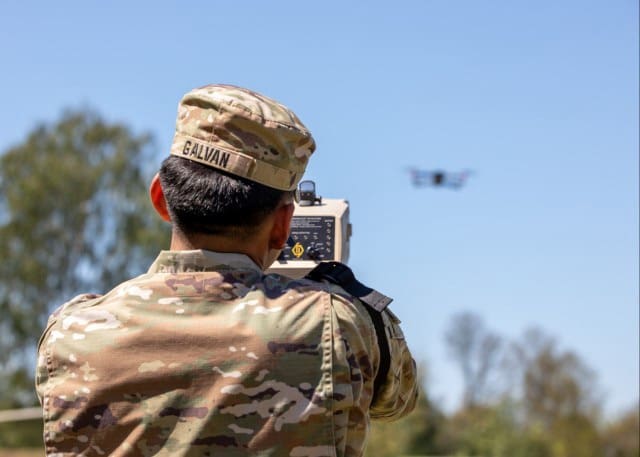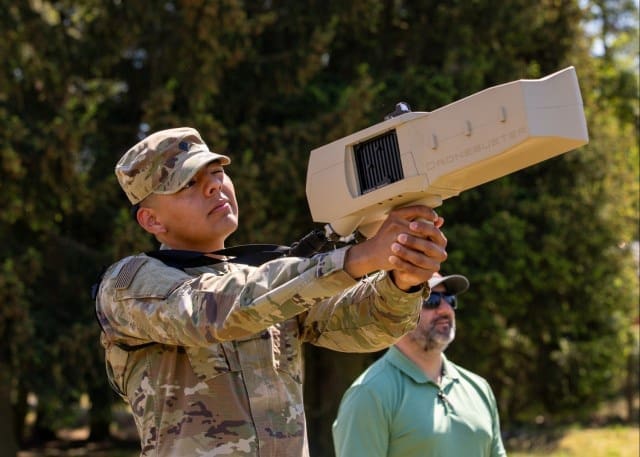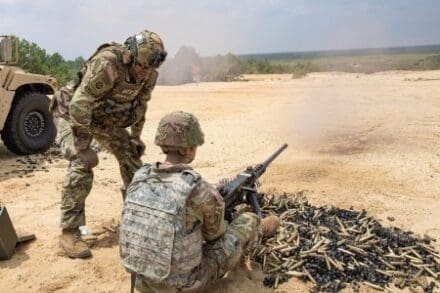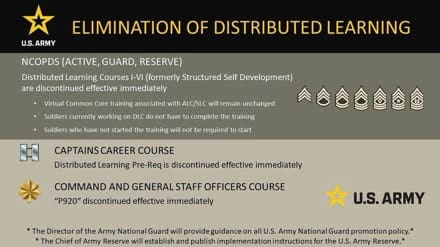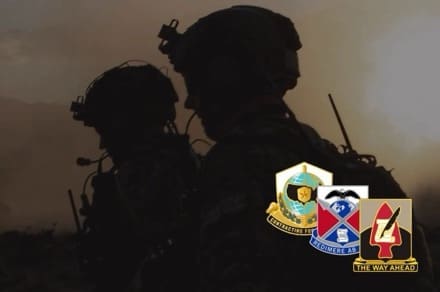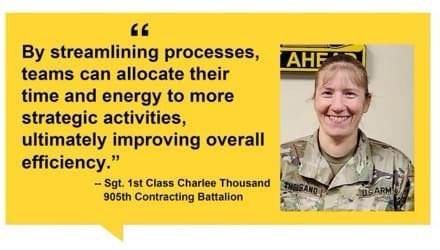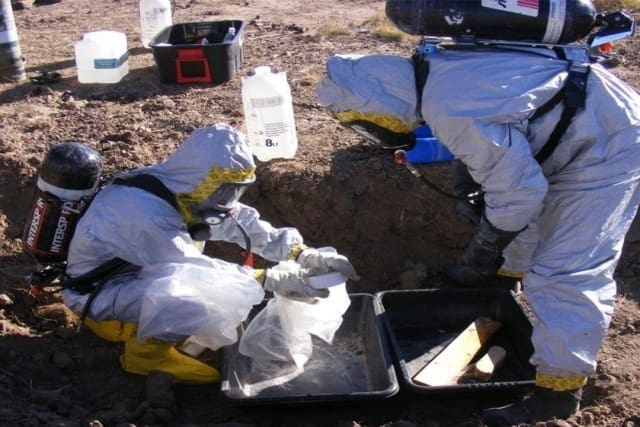
Aberdeen Proving Ground, MD — The U.S. Army Combat Capabilities Development Command Chemical Biological Center (DEVCOM CBC) Chemical Biological Applications and Risk Reduction business unit, known as CBARR, provides field response for recovered chemical munitions all over the country and around the world. Sometimes bioweapons munitions turn up, too. Robert Malone, the CBARR Plans and Assessments Branch chief, has a plan for that, he is writing a field reference guide for recovered bioweapons.
“We’ve had a field reference guide for chemical weapons since the mid-1990s,” Malone said. “It’s called the U.S. Chemical Weapons and Related Material Reference Guide. But there’s not one for biological weapons and related material, and that has always surprised me, so I decided to do something about it.”
What brought this need home for Malone is what happened at a field operations site at Holloman Air Force Base in New Mexico. Recovery team members encountered E-61 bomblets. “The CBARR project manager for this field operation, George Noya, came to me because he knew that I had done some extensive research on bioweapons some years back,” Malone said. “That provided me with some good background, but I also got help from a true CBC expert in this area, Chris Whalley, a Center subject matter expert in biological weapons.”
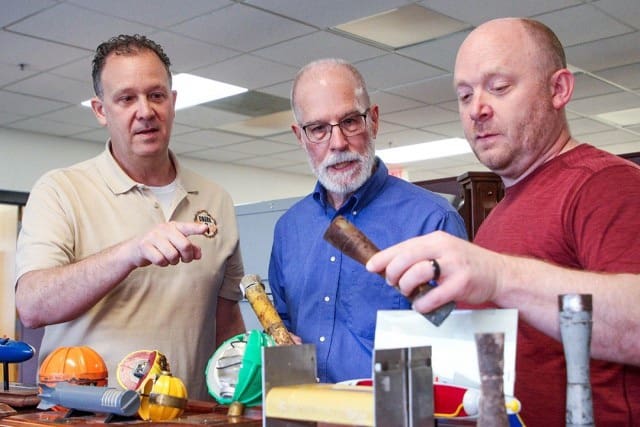
Malone and Noya went to Whalley’s office. Whalley was able to tell them what the item was, its delivery system, its potential agent fills, and he even had an unfilled example of one sitting in his office that they could hold and examine.
“That was enormously helpful to us, but then two things occurred to me,” Malone recalled. “First, why don’t we have this kind of detailed knowledge for the broad range of bioweapons in a form that can be shared? Second, Chris will retire soon, so how can we preserve that knowledge?”
DEVCOM CBC’s mission is to provide innovative chemical, biological, radiological, nuclear, and explosive (CBRNE) defense capabilities to enable the joint warfighters’ dominance on the battlefield and interagency defense of the homeland. It has programs with sources of seed money available to fund good ideas. Through the ‘Quick Empowerment leads to Successful Tomorrows’ program, or QUEST for short, projects of any size from $5,000 to $100,000 tied to the Center’s mission are considered. Applicants get ten minutes to pitch their ideas before the Center’s Innovation Council members, followed by five minutes for questions.
In 2023, Malone submitted his idea, made his pitch and was selected to receive a $22,000 grant to begin work on a concise, easy-to-use field manual. He pulled together a team of CBC colleagues which included Whalley plus Mindy Soethe and Andrew Bailey. Although they were frequently away performing field responses at CBARR’s many project sites, they were able to reach the 40 percent mark over the course of a year.
The manual, thus far, includes biological weapon types, the history of their development and use plus information on their likely prevalence. Compiling this data is a slow, meticulous process, but the team members believe that the usefulness of that data warrants the effort.
Malone and his team submitted a request for funding to finish the field guide and at QUEST 24 Pitch Day in April they gave their pitch to the Innovation Council. They were persuasive, the Innovation Council members gave them a QUEST grant of $25,000, enough to finish the job. As soon as they complete it, they will make it available to CBARR field teams as well as the rest of the Center.
By Brian Feeney


